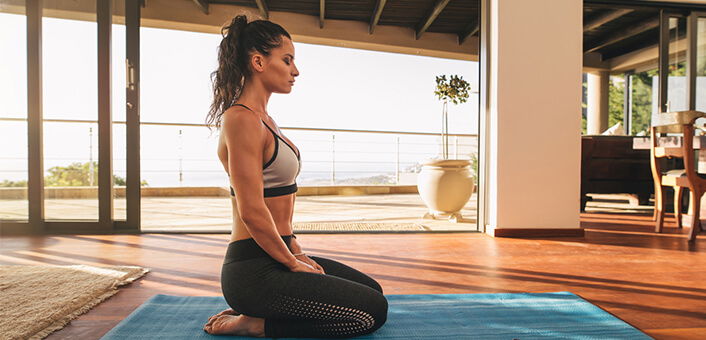Healing Power of Asanas
Sarvagasana (Shoulder stand pose):In Sanskrit 'sarva' means whole and 'anga' means limb. Almost all parts of the body are involved in and benefit from this asana. Lie flat on your back with your arms by the side, palms turned down. Bring your legs up slowly to a 90 o angle and then raise the rest of the body by pushing the legs up and resting their raise the rest of the body by pushing the legs up and resting their weight on the arms. Fix your chin in jugular notch, and use your
arms and hands to support the body at the hip region. The weight of the body should rest on your head, back and shoulders, your arms being used merely for balance. The trunk and legs should be in a straight line. The body, legs, hips and trunk should be kept as vertical as possible. Focus your eyes on your big toes. Press your chin against your chest. Hold the pose for one to three minutes. Return to the starting position slowly
reversing the procedure.Sarvangasana helps relieve bronchitis, dyspepsia, varicose veins and peps up the
digestion. It stimulates the thyroid and para-thyroid glands, influences the bran, heart and
lungs. It helps lymphatic juices to circulate in the brain and strengthens the mind. This
asana should not be done by those suffering Viparitkarani from high blood pressure, heart
disease and eye trouble.Matsyasana (Fish pose):Sit in padmasana. Bend backwards and lie flat on your back without raising your knees.
Press your palms beneath the shoulder. Push the hip backwards thus making a bridge
-like arch with the spine. Then making hooks of your forefingers, grasp your toes without
crossing your arms. Maintain this pose and breathe rhythmically and comfortably.
Reverse the order and return gradually to the starting position of Padamasana.
Matsyasana is beneficial in the treatment of acidity, constipation, diabetes, asthma,
bronchitis and other lung disorders.Uttanapadasana (Left-lifting pose):Lie on your back with leg and arms straight, feet together, palms facing downwards, on
the floor close to the body. Raise your legs above two feet from the floor without bending
your knees. Maintain this pose for some time. Then, lower your legs slowly without
bending the knees. This asana is helpful for those suffering from constipation. It
strengthens the abdominal muscles and intestinal organs.

